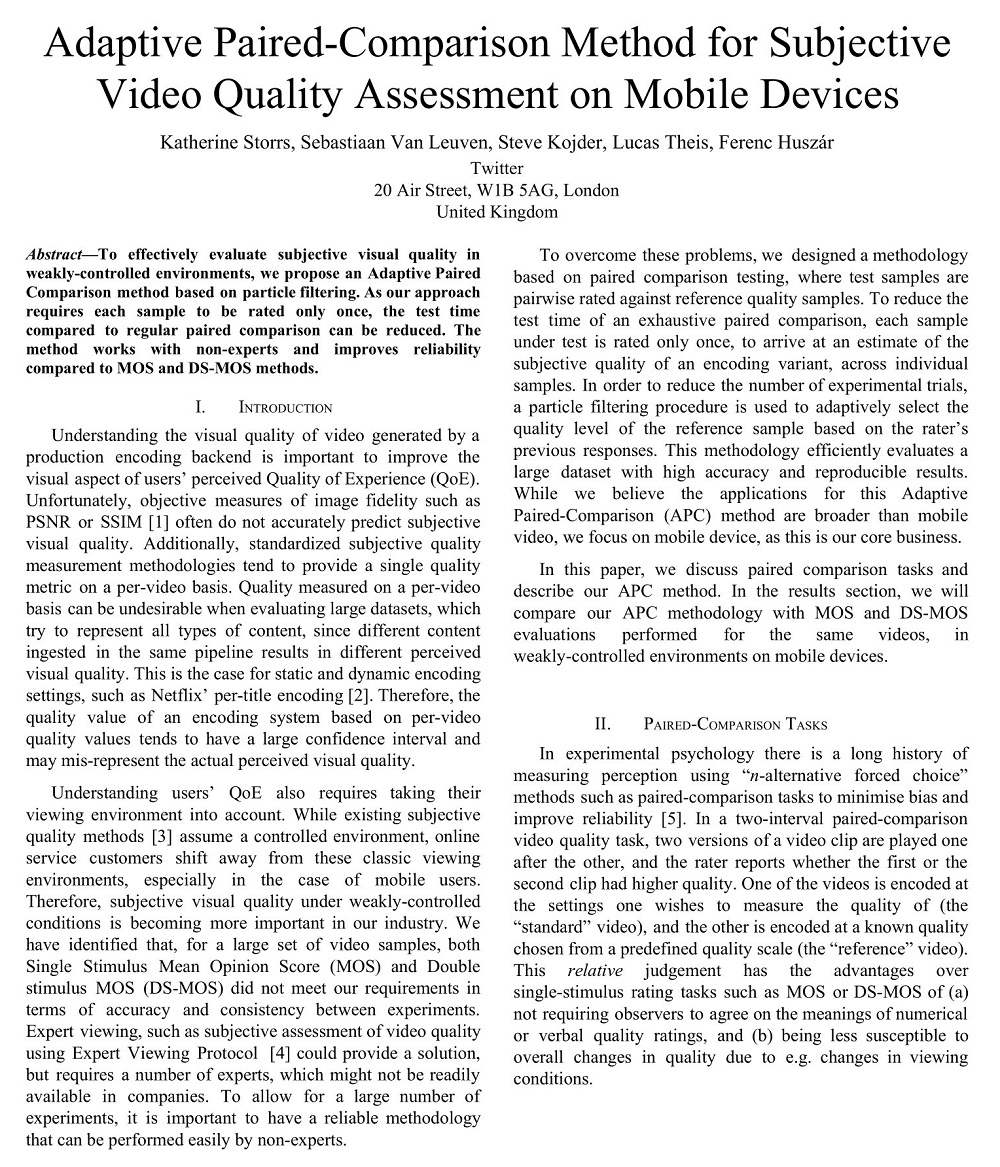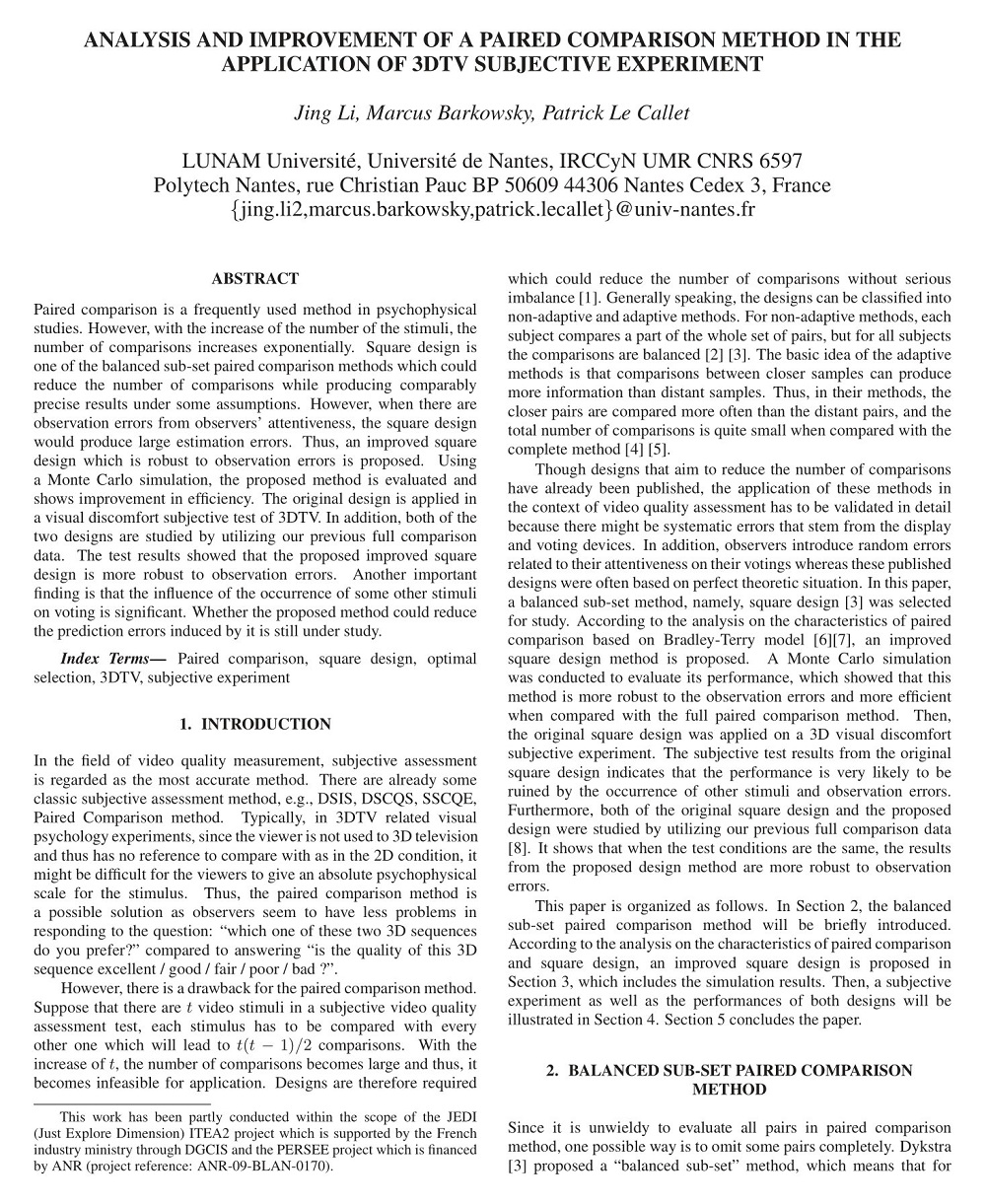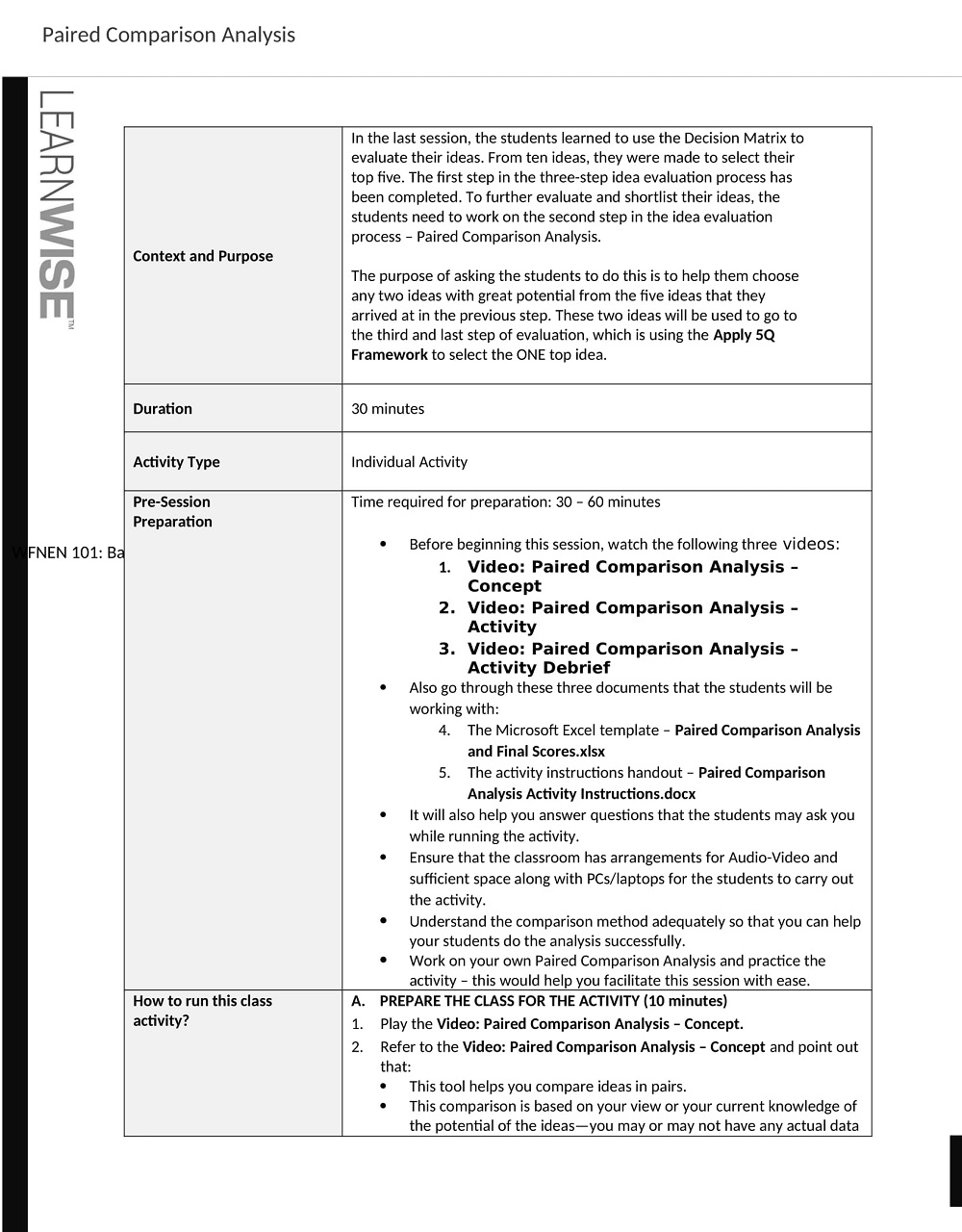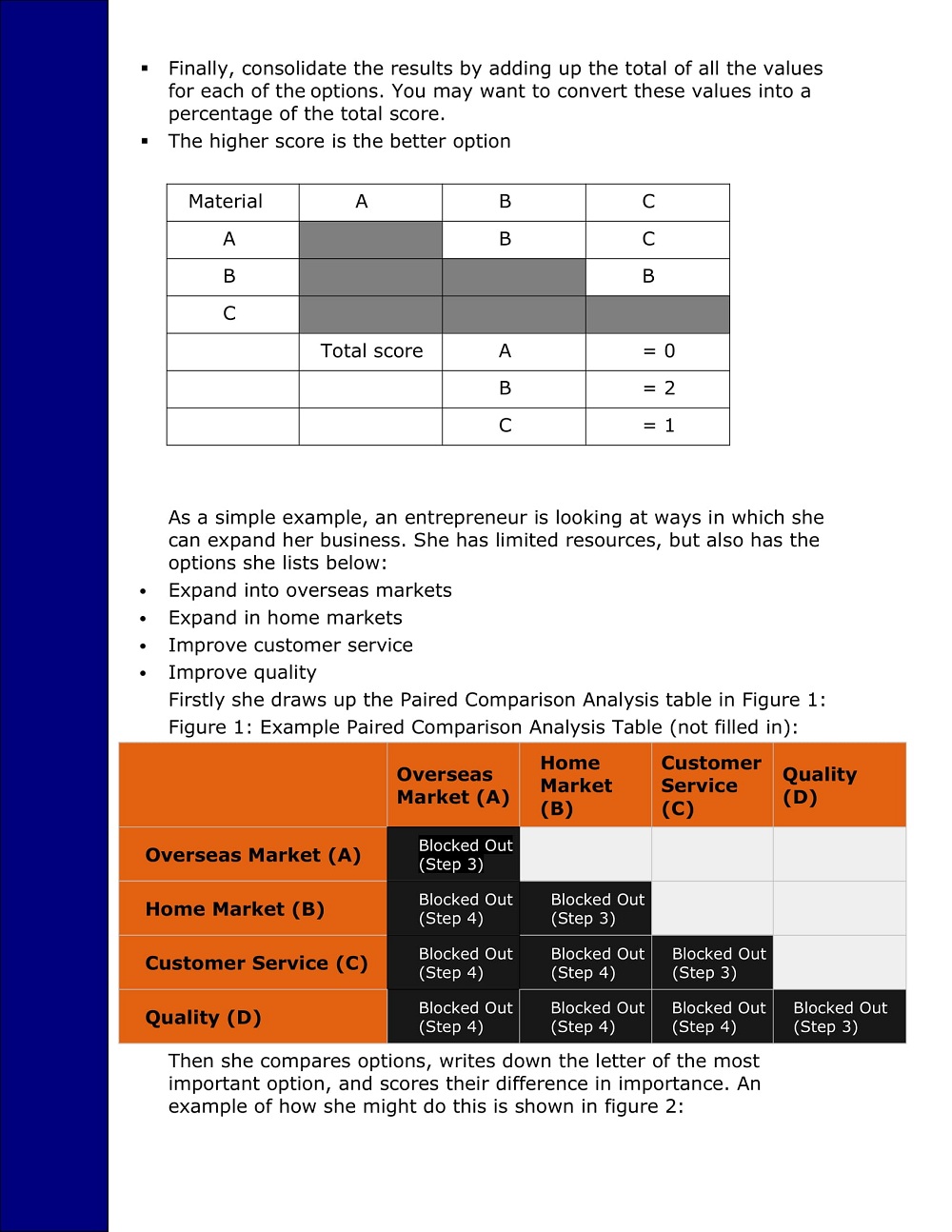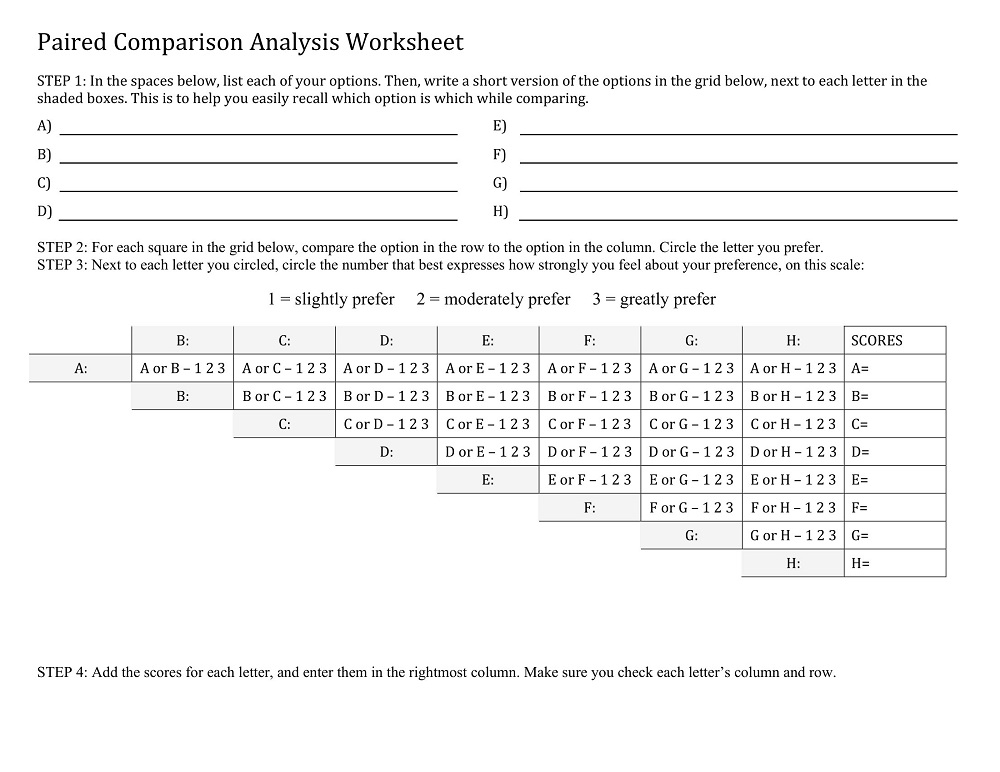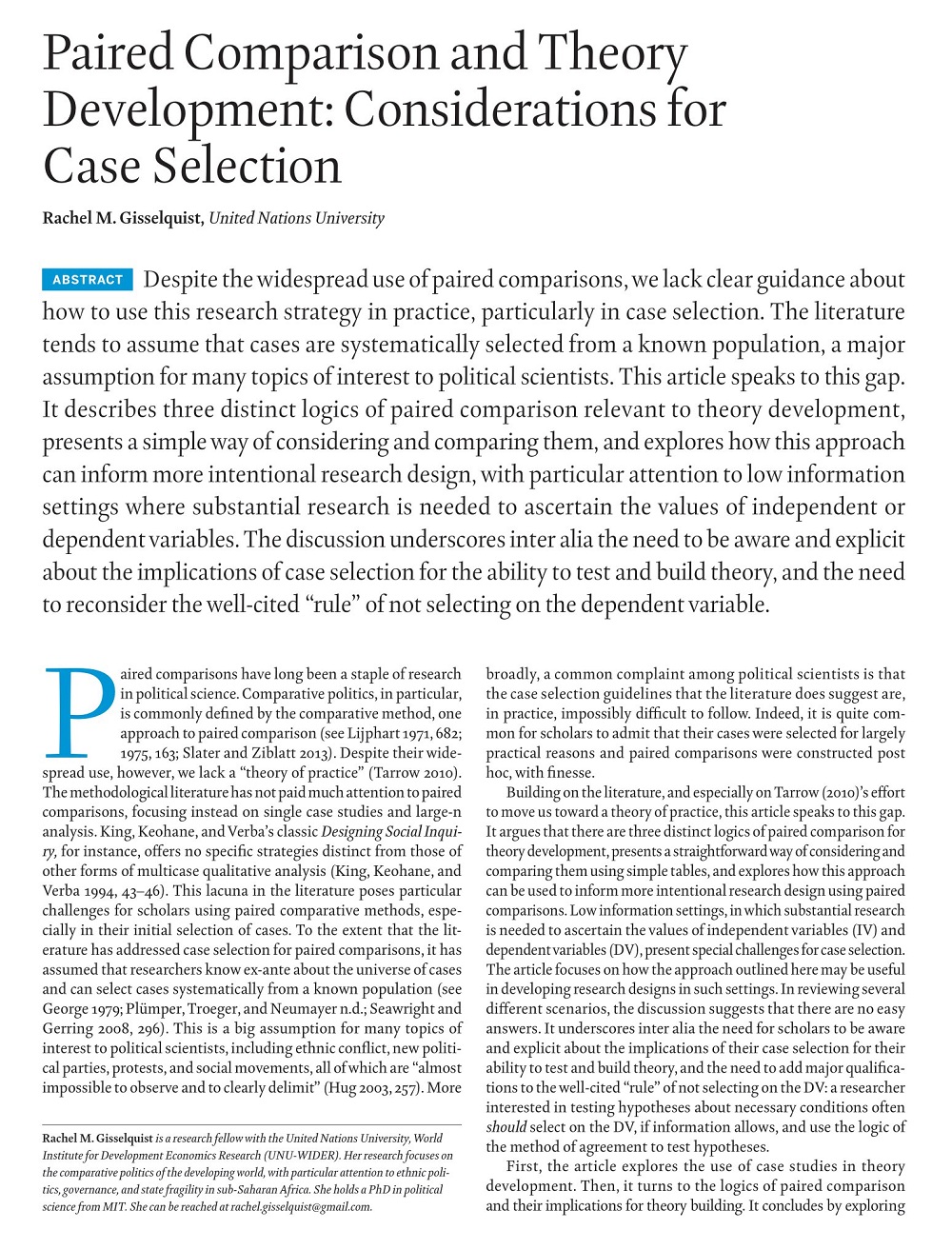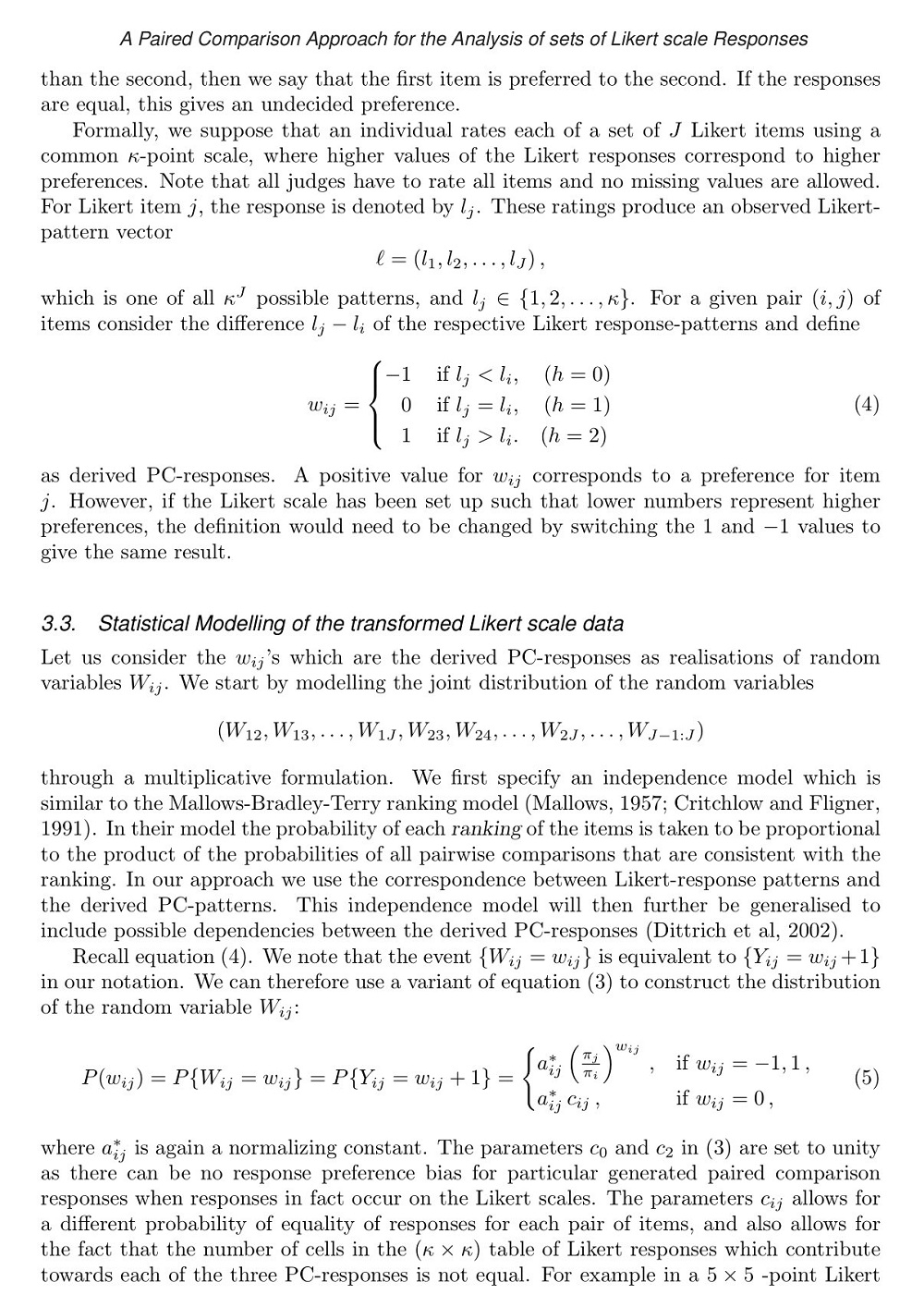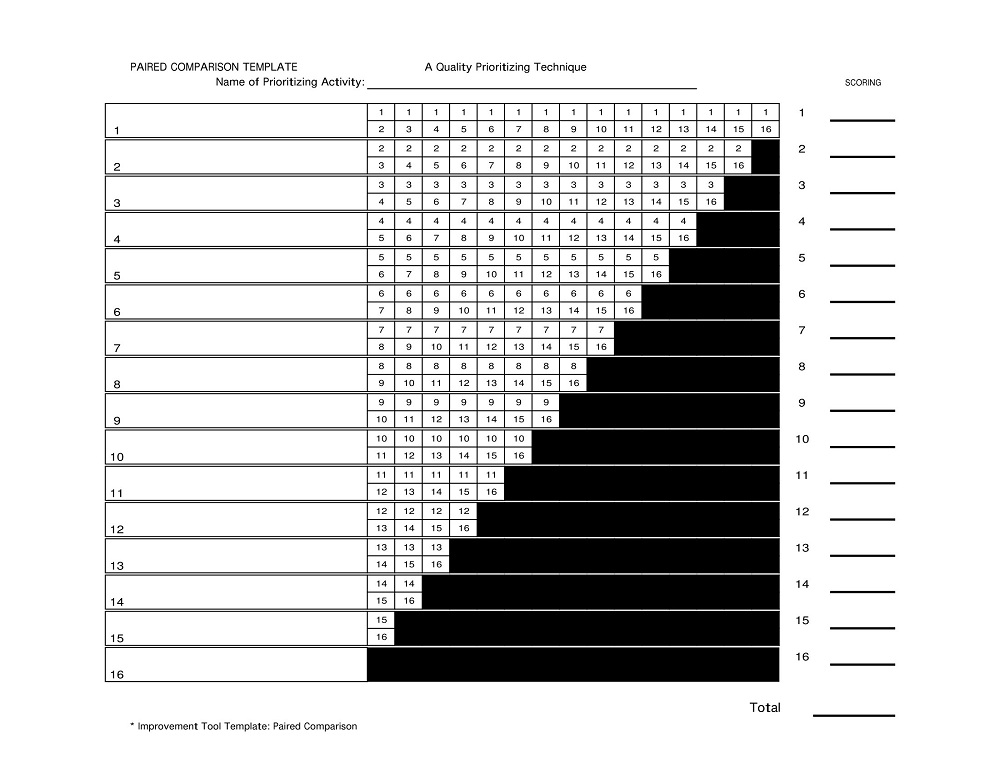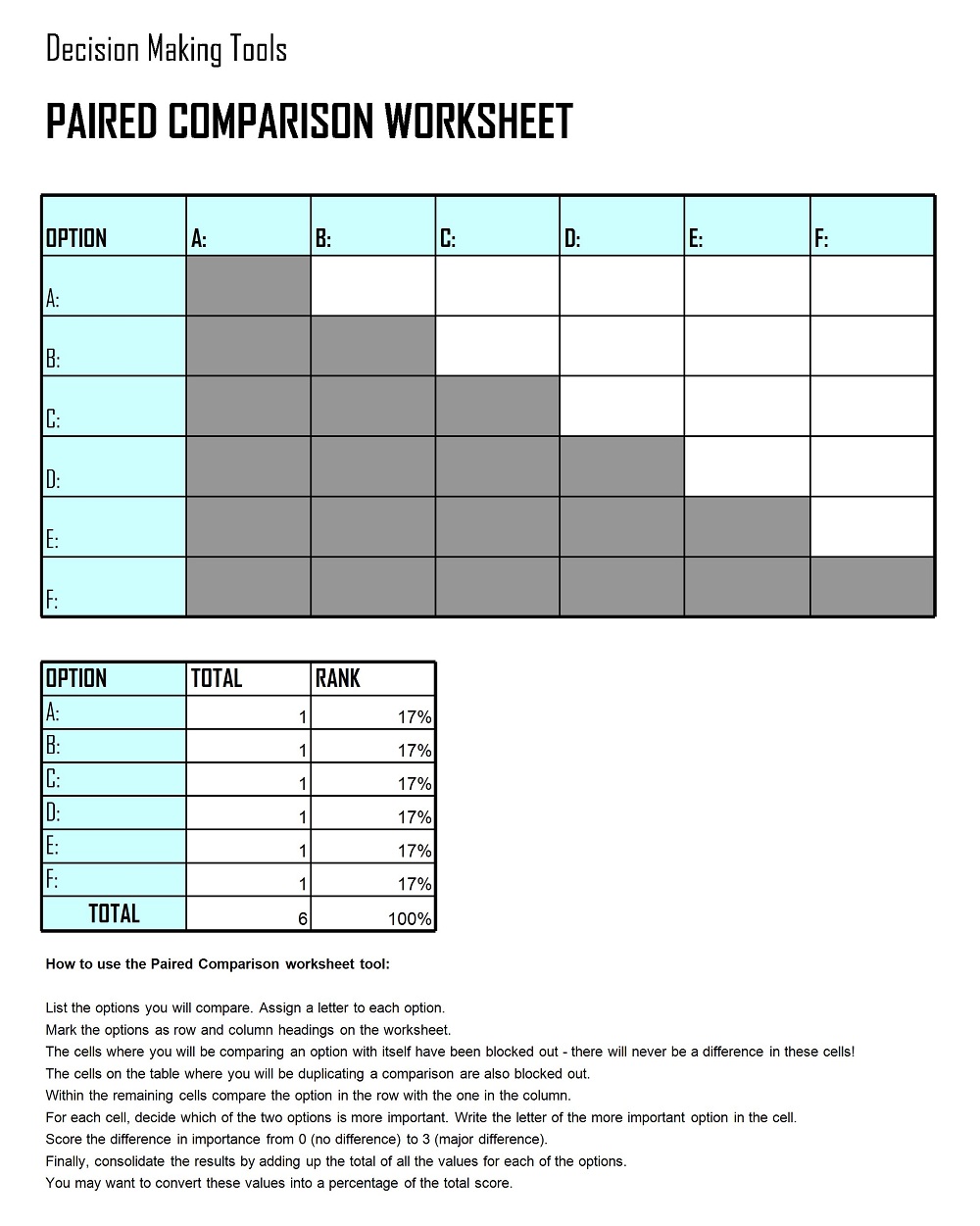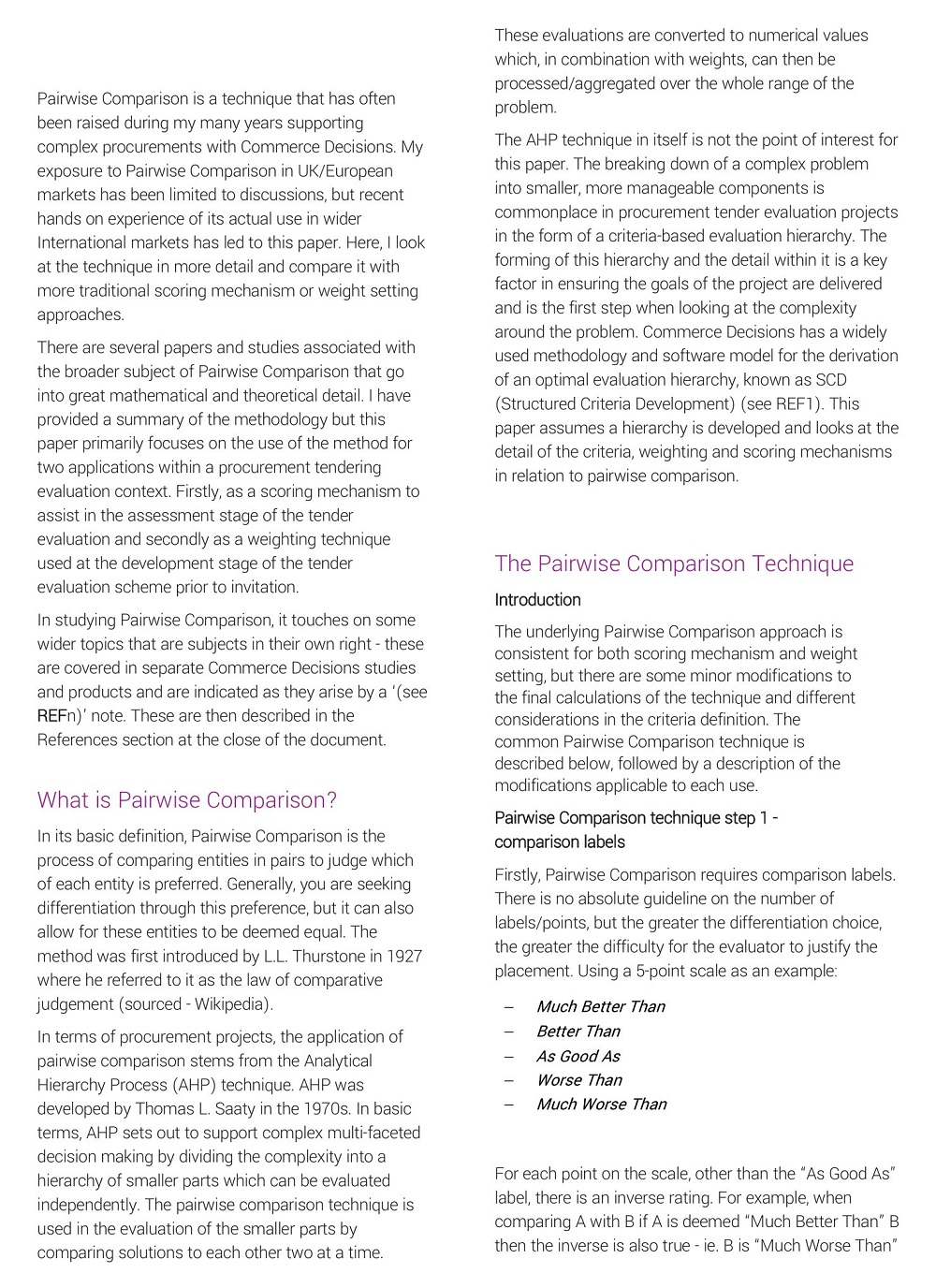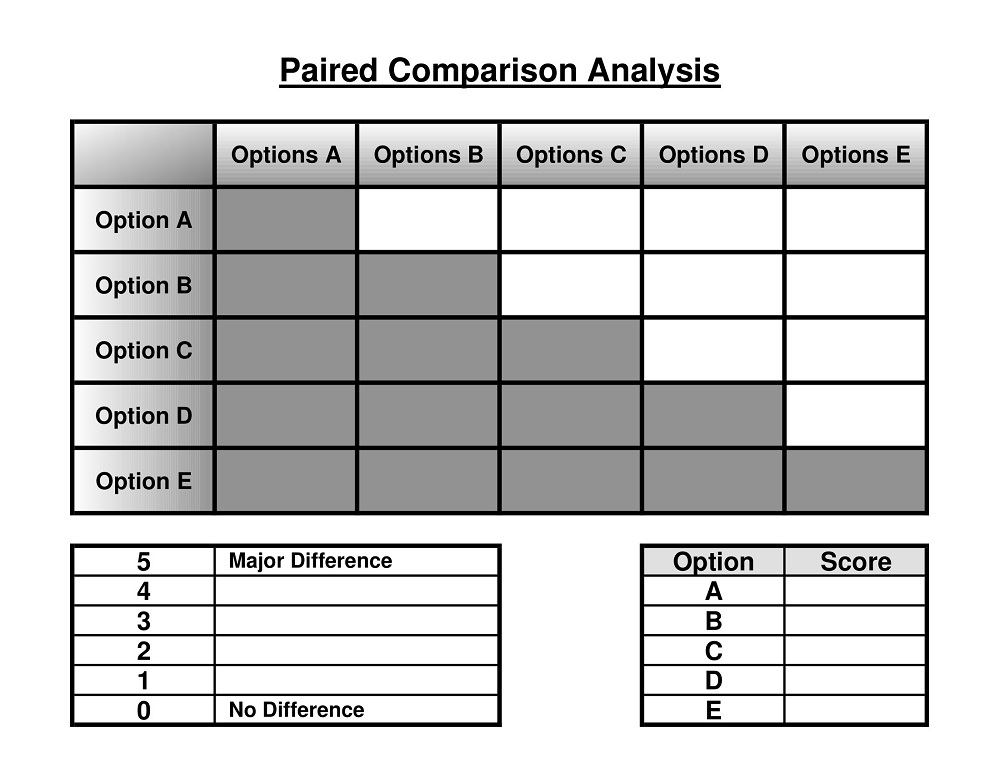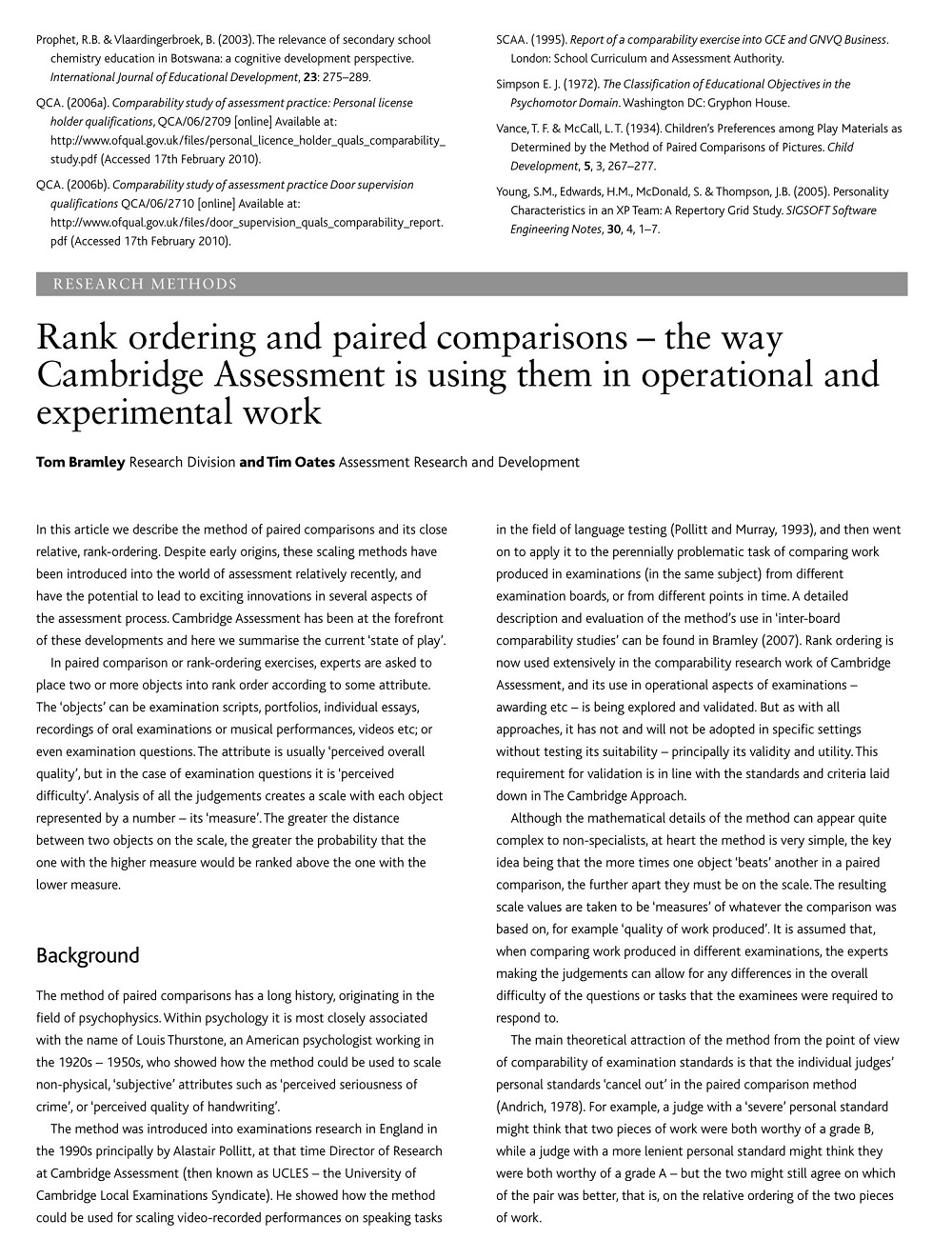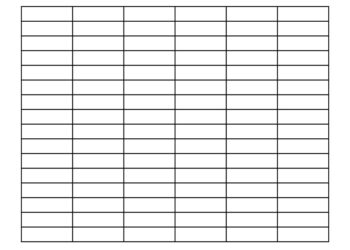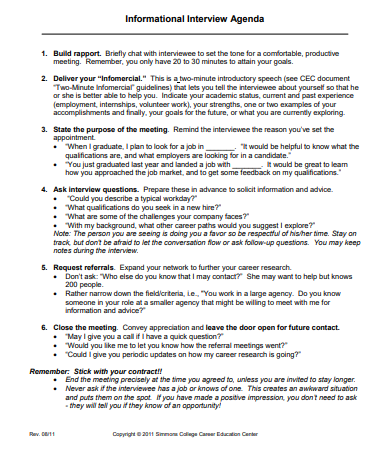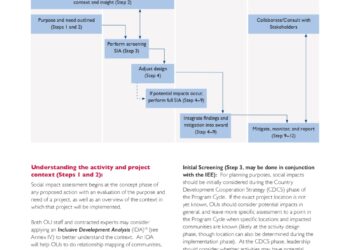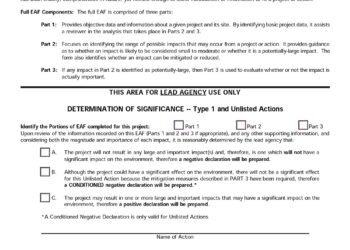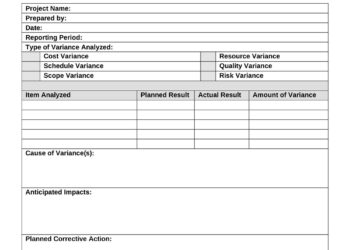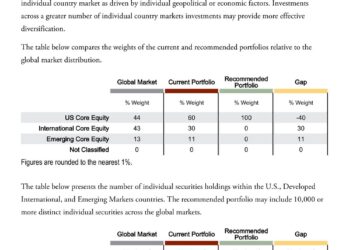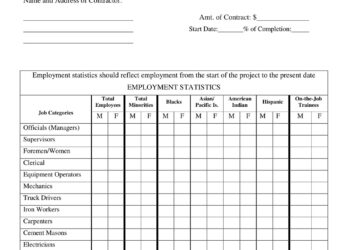Paired comparison analysis is a method used to determine preference or choose between two or more options. A paired comparison analysis template is used to structure the comparisons between those options in a systemized way. This can be useful when it comes to making decisions, especially if there are multiple factors at play when deciding which option is best suited for a particular situation. The template helps to organize the data being compared and also makes it easier to weigh all of the factors involved with each decision.
The process of using this tool requires itemizing relevant considerations, rating them on a scale, and calculating total scores for each option before selecting the one most suitable for the task at hand. In this article, you’ll find a collection of free Printable Paired Comparison Analysis Templates and samples in PDF, Word, and Excel format to help you make your situation effectively.
Download Free Paired Comparison Analysis Templates
Adaptive Paired-Comparison Method
|
Decision Analysis of Pairwise Comparisons
|
Analysis And Improvement of Paired Comparison Method
|
Application of Paired-Comparison Methods to Hearing Aids
|
Final Paired Comparison Analysis DOC
|
Improvement of the Scheffe Method for Paired Comparisons
|
Paired Comparison Analysis Format
|
Paired Comparison Analysis Framework
|
Paired Comparison Analysis Sample Word
|
Paired Comparison Analysis Worksheet
|
Paired Comparison and Theory Development
|
Paired Comparison Approach for the Analysis
|
Paired Comparison Chart Template
|
Paired Comparison Worksheet Excel
|
Pairwise Comparison Technique Steps
|
Printable Paired Comparison Analysis
|
Rank Ordering And Paired Comparisons
|
Standard Paired Comparison Analysis Methods
|
What is Paired Comparison Analysis?
Paired Comparison Analysis is a decision-making tool that helps organizations come to conclusions and make choices when faced with multiple options. It does this by systematically comparing each of the options against each other to evaluate their relative advantages and disadvantages. This eliminates some of the difficulties associated with decisions like weighing uncertain values or information, as outcomes occur in terms of relative differences between the alternatives being evaluated. For example, if two job applicants must be selected from five candidates, a data-driven paired comparison analysis can help rule out weaker applicants and give an accurate account of which applicants are better qualified for the job. Paired Comparison Analysis has gained popularity in recent years and is now widely used by organizations across various industries for decisions ranging from product development to employee selection.
Benefits of using Paired Comparison Analysis
Paired Comparison Analysis helps an individual or organization make decisions more easily by breaking a complex decision into smaller, more manageable pieces. It enables users to compare different potential choices to prioritize and evaluate them based on given criteria. This method quickly identifies and surfaces strong preferences in multi-option scenarios, and provides a logical way to assess trade-offs associated with various alternatives. Additionally, the use of Paired Comparison Analysis can reduce bias in decision-making since it requires focused thought around each comparison. Lastly, due to its simplicity and speed of completion, this technique is inexpensive, time-saving, and capable of handling large amounts of data. For these reasons, Paired Comparison Analysis is an invaluable tool for making informed decisions.
Steps to Perform Paired Comparison Analysis
Making decisions can be difficult, especially when you have a lot of options and perspectives to consider. That’s where paired comparison analysis comes in. This technique allows you to compare two options against each other to make a decision. Here’s a step-by-step guide on how to perform paired comparison analysis.
Identify Your Alternatives
The first step is to identify the alternatives that you are considering for your decision. Make sure that these alternatives have been thoroughly researched and examined to give you an accurate view of the benefits and drawbacks of each option.
Assign Weights
Once you have identified your alternatives, the next step is to assign weights or values to each alternative based on their importance or relevance concerning the decision at hand. This will help you prioritize your options so that you can focus on the most impactful ones.
Compare Alternatives
The third step is to compare each of your alternatives against one another by asking yourself questions such as “Which one provides better value?” or “Which one has more potential?” By comparing each option concerning various criteria, you will be able to gain insights into which one is best suited for your needs.
Calculate Results
Once all of the comparisons have been made, it’s time to calculate the results of your analysis. This involves adding up all the values for each alternative and then comparing them relative to one another. The higher-scoring alternative will likely be the best choice for your situation but do not forget that it is important to look at both qualitative and quantitative data when making any decisions.
Applications of Paired Comparison Analysis in Business
Paired comparison analysis is a powerful tool for businesses that allows them to compare and quantify various criteria when making important decisions. By analyzing these criteria about each other, businesses can more effectively evaluate the strengths, weaknesses, and potential of different investments or products. For instance, real estate developers often use paired comparison analysis to decide between competing properties, they can weigh factors such as location, marketability, layout, environmental issues, size, and cost about one another to determine the best investment option. Moreover, paired comparison analysis can be used by companies in product development to compare potential combinations of features and materials. By using this systematic approach to compare objectives concerning each other’s relative costs and benefits, businesses can optimize important decisions while minimizing risk.
How to Create a Paired Comparison Analysis Template for Your Business
A paired comparison analysis is an effective way to compare two or more items in terms of their importance and relevance. By creating a template for these comparisons, business owners and decision-makers can easily identify the most important factors in any given situation. Here is how to create an effective paired comparison analysis template.
Identify the Items You Want to Compare
The first step is to identify the items you want to compare. This could be different products, services, competitors, or investment options. Make sure that you are comparing items that are related in some way so that they can be fairly evaluated using the same criteria. Once you have identified the items you want to compare, create a list of them on your template.
Define Criteria For Comparison
The next step is to define criteria for comparison. These criteria should be relevant to the items you are comparing and should provide enough information for decision-makers to make informed decisions about which item is right for them. For example, if you are comparing different software solutions, your criteria could include cost, complexity, ease of use, customer service ratings, etc. Once you have established your criteria for comparison, add them in columns on your template alongside each item being compared.
Assign Values To Each Criteria
The final step is to assign values to each criterion on your template. This can be done by assigning numerical values (1-5) or qualitative values (high/medium/low). If numerical values are used, make sure they accurately reflect the relative importance of each criterion compared with the others, this will ensure that all items being compared are judged fairly against one another. Once all values have been assigned, add them to the appropriate columns on your template beside each item being compared.
Reference Link


